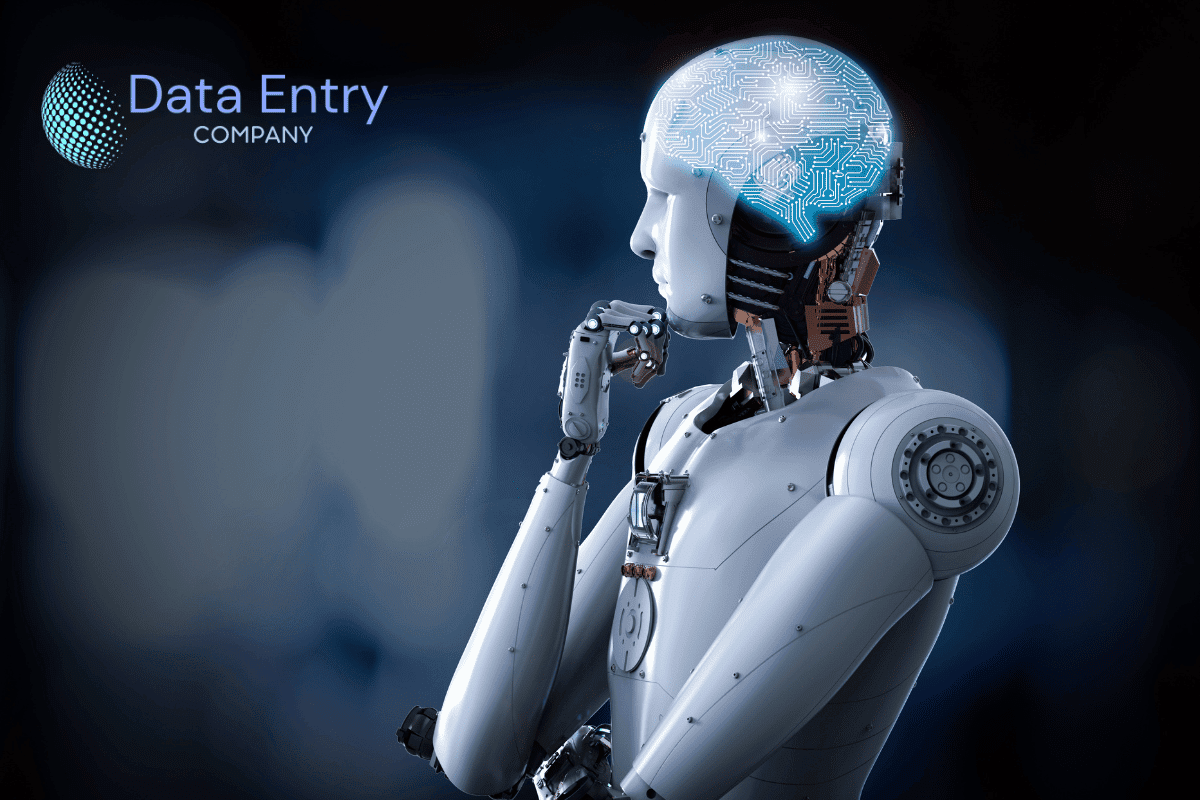Data entry work refers to the process of putting information into a computer system or database. This can range from manual data entry using a keyboard or mouse — to more advanced data entry methods using advanced software and tools.
Data entry work is an essential aspect of many industries: including finance, healthcare, retail and government.
What kind of tools do AI professionals use for data entry. Keep reading to find out along with information about the advantages of AI help. Let’s get to work!
Table of contents: The Role of AI
AI Tools that can Help You
Natural Language Processing (NLP) – this is a type of AI that focuses on the interaction between computers and humans using natural language. It’s where the computer tries to look at how people talk and then imitate a similar style.
One popular Natural Language Processing (NLP) tool is spaCy. SpaCy is used in various applications such as chatbots, document summarization, entity recognition, and sentiment analysis.
Machine Learning – a subset of AI that enables computers to learn and improve from experience without being explicitly programmed. xWhen you see information about “no code” programs that create websites, that’s an example of machine learning.
Computer Vision – This is a type of AI concerned with enabling computers to interpret and understand visual information from the world. Think self driving cars for this.
One popular computer vision AI program is TensorFlow. It is an open-source software library for data flow and differentiable programming across a range of tasks, and is used for a variety of applications, including image recognition, natural language processing and training and inference of deep neural networks.
Chatbots – AI-powered virtual assistants that use NLP (see above) and machine learning algorithms to understand and respond to user requests in natural language. Most recently, ChatGPT is an example of a high level chamber.
There are several other writing type of AI assistants that can help with data entry. You might be familiar with some other chatbots: such as Facebook chatbots, Google assistant, Amazon Alexa, Microsoft Cortana, WeChat chatbot in China. They all work in similar ways and make adjustments based on “experience.”
In future articles, we are going to cover ChatGPT a lot in relation to how it can help you with your data entry work. It’s a new tool to help advance your career — when you know how to use it to the fullest.
Recommender Systems – These are AI-powered systems that can actually suggest products, services, or content to people based on past behavior and preferences.
A popular recommender system program is TensorFlow Recommenders, which is a library for building recommendation models on top of TensorFlow. It provides a high-level API for building and training recommendation models, and includes a number of pre-built components and tools for evaluating and serving recommendations. TensorFlow Recommenders is designed to be flexible and scalable, and is well-suited for both offline and online recommendation tasks.
The main things is that each of these tools are here to help you get more work done faster. And if they sound intimidating at all, don’t worry as they are designed to be able to understand what you want. You just have to tell them.
Think efficacy and accuracy so that you can get more quality work done in a shorter period of time.
Importance of Efficiency and Accuracy
Data entry work requires a high level of accuracy and efficiency to ensure that the information being entered is complete, accurate, and up-to-date. As you can imagine, incorrect or outdated data can lead to major consequences, including lost revenue, decreased customer satisfaction, and even legal issues.
Therefore, it’s essential for data entry professionals to be able to work efficiently and accurately, in order to maintain integrity for the data being entered.
AI Offers Support for Data Entry Professionals
Artificial intelligence (AI) has just recently emerged as a time saving tool for data entry professionals.
It does this by automating much of the manual and repetitive aspects of data entry work — freeing you up to focus on more complex value-added tasks.
This article explores many ways in which artificial intelligence programs can support data entry professionals.
Advantages of Increased Efficiency and Streamlining
There are several ways that the new artificial intelligence programs can help data entry pros make more money. These include:
Automation of Repetitive Tasks
Automating repetitive tasks is among the main benefits of using AI. Typical tasks where AI can help are with data validation and data correction. Data entry professionals can then work more efficiently, reducing the time and effort required to complete tasks like this.
This frees up time and energy for data entry professionals to focus on more value-adding tasks, such as data analysis and reporting.
Streamlining Work Processes
AI tools can automate the process of data transfer between different systems, reducing the time and effort required to manually transfer data between systems. This helps to streamline work processes, making data entry work more efficient and less prone to errors.
Let’s look at Improved Accuracy More
Increased accuracy can be viewed in several different ways. These are signs that accuracy is getting better:
Minimization of Human Error
Human error is one of the most common causes of inaccuracies in data entry work. AI technology can help to minimize human error by automating repetitive tasks and streamlining work processes. It’s basically taking the tiring part of the work and making things easier for you.
By reducing the possibility for human error, data entry professionals can ensure the data they’re entering is complete, accurate and up-to-date.
Advanced Validation and Verification Techniques
By it’s very nature, AI technology has built in advanced validation and verification techniques — these can further improve the accuracy of the work.
For example, AI tools can automatically detect and correct errors in data, ensuring that the data being entered is complete, accurate, and up-to-date. Something similar would be like auto-correct on your phone.
These advanced techniques help to minimize the potential for errors, further improving the accuracy of data entry work.
Increased Productivity
AI technology can help to reduce the time spent on manual data entry, freeing up data entry professionals to focus on more value-adding tasks. These tasks include data analysis, data reporting, and other activities that require a higher level of skill and expertise. By focusing on these complex tasks, data entry professionals can contribute to the growth and success of their organization quicker.
Other AI Tools for Data Entry
Optical Character Recognition (OCR)
You might remember OCR software used in conjunction with a paper scanner to input text into a computer. Things have advanced since those times.
Now OCR technology allows for automated data capture from many physical sources such as paper documents, images, and forms. This technology can accurately and quickly convert scanned documents into digital text, reducing the time and effort required for manual data entry. OCR technology also helps to minimize errors associated with manual data entry, improving the accuracy of the data being entered.
OCR technology can also be integrated with other data entry tools, such as data validation and correction tools. This integration helps to streamline work processes, making data entry work more efficient and less prone to error.
Moving Forward
AI technology can support data entry professionals in maximizing efficiency and accuracy in their work. From automating repetitive tasks, to improving data accuracy, to supporting data analysis and reporting, AI technology provides a wide range of benefits for data entry professionals.
As technology continues to evolve, AI will play an increasingly important role in supporting data entry professionals in their work. It’s essential for data entry professionals to understand the various ways in which AI technology can support them, in order to stay competitive and thrive in their field.




